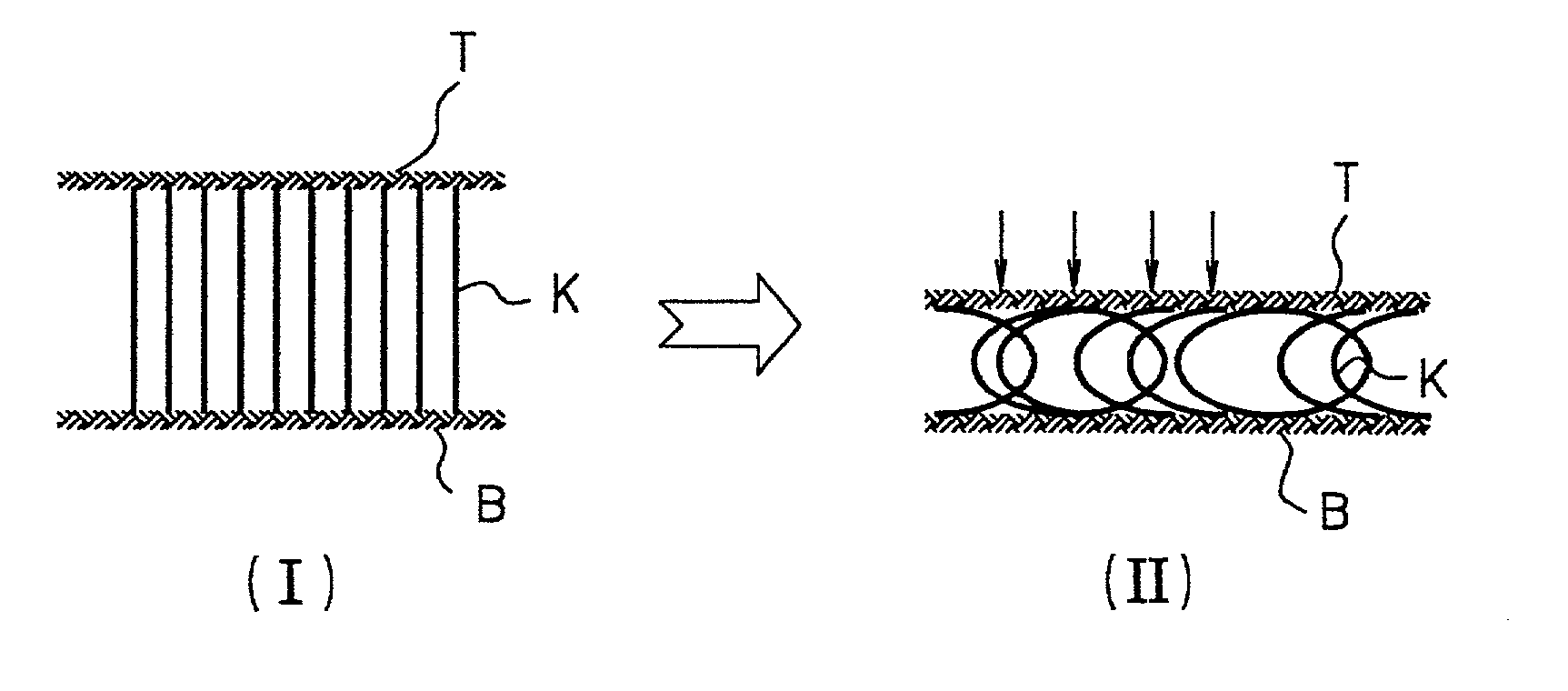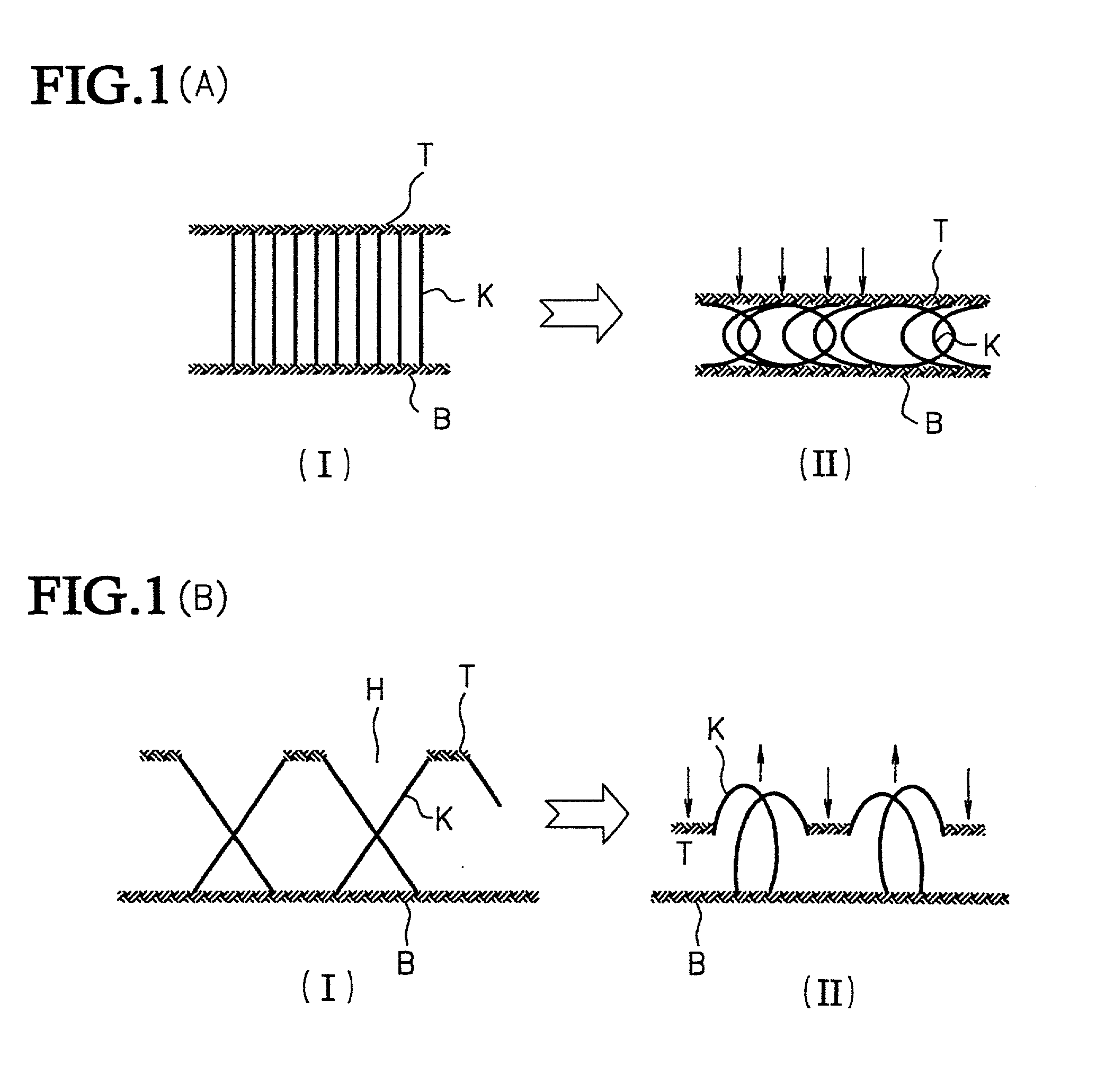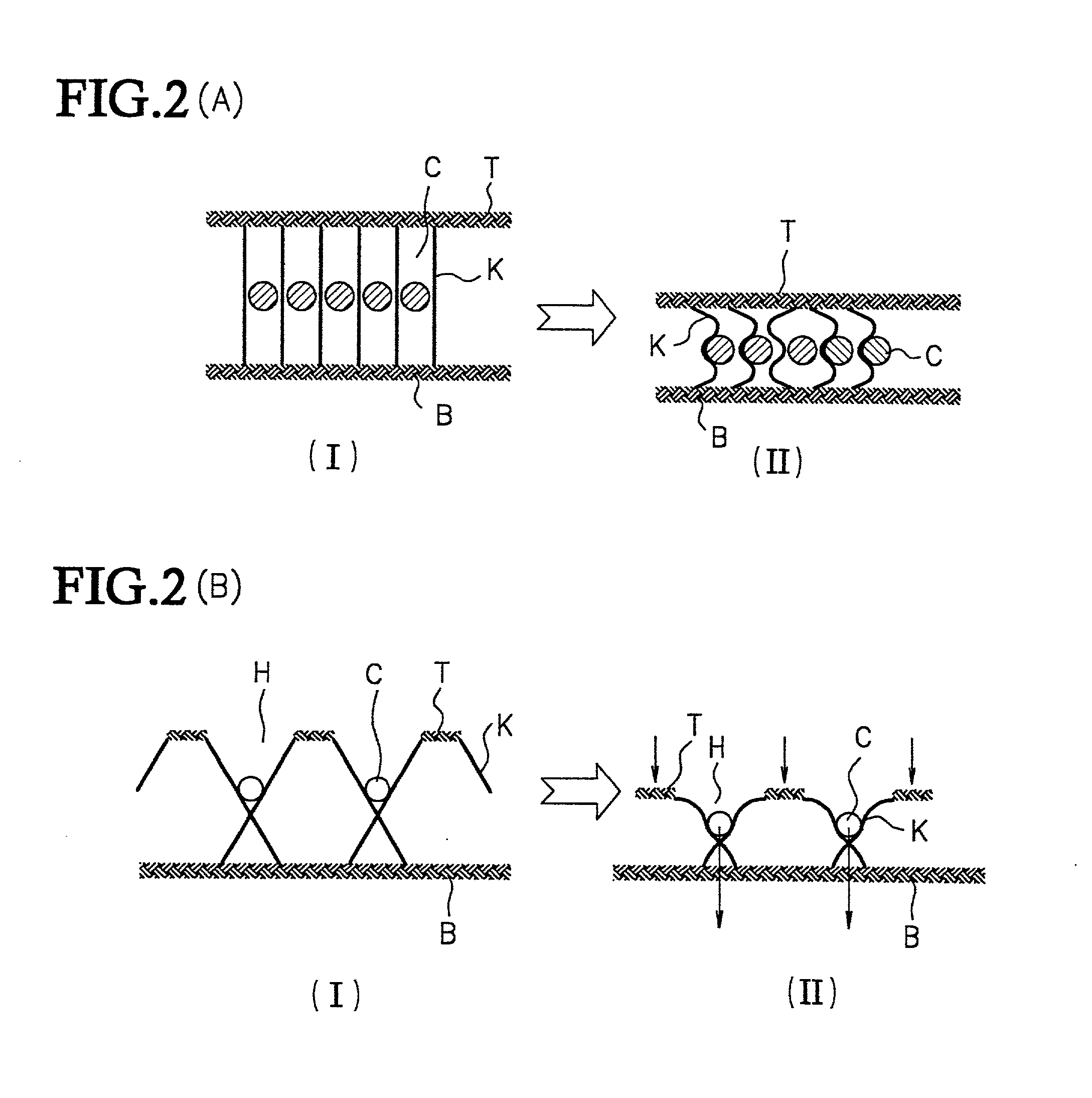Three-dimensionally structured warp knitted fabric
a three-dimensional structure and knitted fabric technology, applied in knitting, textiles and papermaking, ornamental textile articles, etc., can solve the problems of fabric discomfort in use, extreme deterioration in resiliency and recovery from compression, and fuzzing of yarn
- Summary
- Abstract
- Description
- Claims
- Application Information
AI Technical Summary
Benefits of technology
Problems solved by technology
Method used
Image
Examples
first embodiment
[0025] Based on the above description, further detailed illustration of the present invention is given through the following preferred embodiments of the present invention by referring to the accompanying drawings. (First Embodiment of the Invention) In this embodiment of the present invention, as shown in FIG. 3, the three-dimensionally structured warp knitted fabric (D) is designed with a net texture for its top substructure (T) and a plain texture for its bottom substructure (B). As shown in FIG. 3(A), the net texture (N) is composed of hexagonal pores (H), yarn joining portions (M) and yarn branching portions (E). The three-dimensionally structured warp knitted fabric (D) has yarns connecting the top and bottom substructures at oblique angles (K) with X-shaped intersections (X) in its course-wise cross-section as shown in FIG. 3(B).
[0026] The yarns present between the substructure connecting yarns at their intersections to control them (C) are designed as substructure connecting...
second embodiment
[0030] (Second Embodiment of the Invention)
[0031] In this embodiment of the present invention, as shown in FIG. 5, the three-dimensionally structured warp knitted fabric (D) is designed in a similar way to its first embodiment as typically shown in FIG. 3 with a net texture for its top substructure (T) and a plain texture for its bottom substructure (B). The net texture has hexagonal pores (H). The three-dimensionally structured warp knitted fabric (D) has yarns connecting the top and bottom substructures at right angles (orthogonally) (K) in its course-wise cross-section as shown in FIG. 5 (B). It should be noted here with regard to FIG. 5(B), wherein the substructure orthogonally connecting yarns are apparently oblique, that this apparent obliqueness of the yarns is attributable to the principle underlying the knitting of a net texture, according to which the opening of the pores in the net texture causes them to be inclined at oblique angles, although they are, in principle, arra...
third embodiment
[0035] (Third Embodiment of the Present Invention)
[0036] In this embodiment of the present invention, as shown in FIG. 7, the three-dimensionally structured warp knitted fabric (D) is designed in a similar way to its first and second embodiments as typically shown in FIG. 3 and FIG. 5, respectively, with a net texture for its top substructure (T) and a plain texture for its bottom substructure (B). The net texture has hexagonal pores (H). The three-dimensionally structured warp knitted fabric (D) has yarns connecting the top and bottom substructures at oblique angles (K) with X-shaped intersections (X) in its course-wise cross-section as shown in FIG. 7(B).
[0037] The yarns present between the substructure connecting yarns at their intersections to control them (C) are designed as substructure connecting yarn controlling yarns arranged in zigzags in the wale-wise direction (C3) as best depicted in FIG. 8(A). The zigzag arranged substructure connecting yarn controlling yarns (C3) comp...
PUM
 Login to View More
Login to View More Abstract
Description
Claims
Application Information
 Login to View More
Login to View More - R&D
- Intellectual Property
- Life Sciences
- Materials
- Tech Scout
- Unparalleled Data Quality
- Higher Quality Content
- 60% Fewer Hallucinations
Browse by: Latest US Patents, China's latest patents, Technical Efficacy Thesaurus, Application Domain, Technology Topic, Popular Technical Reports.
© 2025 PatSnap. All rights reserved.Legal|Privacy policy|Modern Slavery Act Transparency Statement|Sitemap|About US| Contact US: help@patsnap.com



